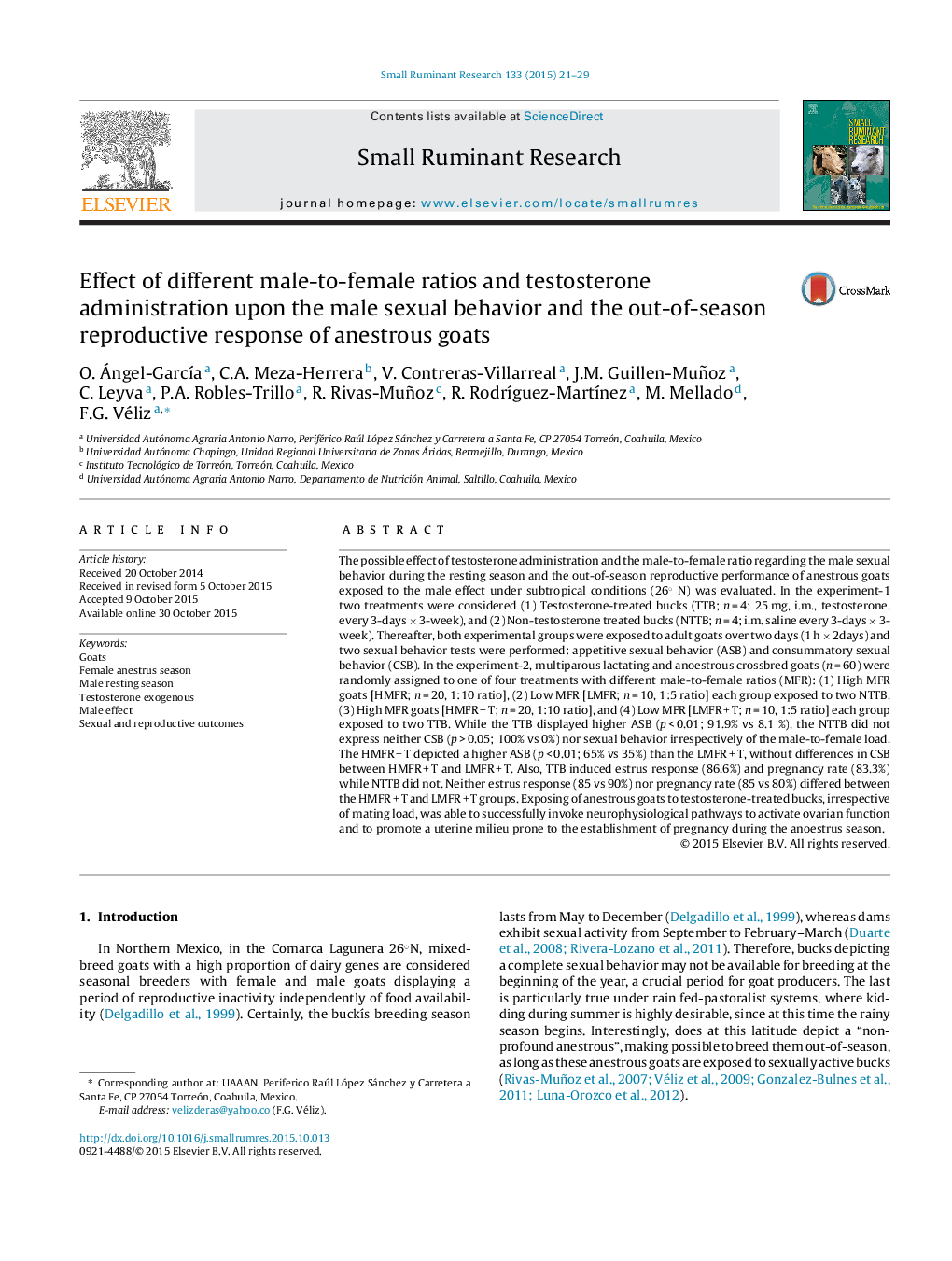| Article ID | Journal | Published Year | Pages | File Type |
|---|---|---|---|---|
| 2456816 | Small Ruminant Research | 2015 | 9 Pages |
•Testosterone quickly elicited a high sex drive with a full repertoire of sexual behaviors, promoting.•An enhancement not only in the appetitive but also in the consummatory sexual behaviors.•An increased goat́s sexual activity while triggered an anticipated onset in the ovarian function.•Such induction and synchronized estrous behavior occurred regardless the male-to-female ratio.•Results are key to design out-of-season reproductive strategies under marginal production systems.
The possible effect of testosterone administration and the male-to-female ratio regarding the male sexual behavior during the resting season and the out-of-season reproductive performance of anestrous goats exposed to the male effect under subtropical conditions (26° N) was evaluated. In the experiment-1 two treatments were considered (1) Testosterone-treated bucks (TTB; n = 4; 25 mg, i.m., testosterone, every 3-days × 3-week), and (2) Non-testosterone treated bucks (NTTB; n = 4; i.m. saline every 3-days × 3-week). Thereafter, both experimental groups were exposed to adult goats over two days (1 h × 2days) and two sexual behavior tests were performed: appetitive sexual behavior (ASB) and consummatory sexual behavior (CSB). In the experiment-2, multiparous lactating and anoestrous crossbred goats (n = 60) were randomly assigned to one of four treatments with different male-to-female ratios (MFR): (1) High MFR goats [HMFR; n = 20, 1:10 ratio], (2) Low MFR [LMFR; n = 10, 1:5 ratio] each group exposed to two NTTB, (3) High MFR goats [HMFR + T; n = 20, 1:10 ratio], and (4) Low MFR [LMFR + T; n = 10, 1:5 ratio] each group exposed to two TTB. While the TTB displayed higher ASB (p < 0.01; 91.9% vs 8.1 %), the NTTB did not express neither CSB (p > 0.05; 100% vs 0%) nor sexual behavior irrespectively of the male-to-female load. The HMFR + T depicted a higher ASB (p < 0.01; 65% vs 35%) than the LMFR + T, without differences in CSB between HMFR + T and LMFR + T. Also, TTB induced estrus response (86.6%) and pregnancy rate (83.3%) while NTTB did not. Neither estrus response (85 vs 90%) nor pregnancy rate (85 vs 80%) differed between the HMFR + T and LMFR + T groups. Exposing of anestrous goats to testosterone-treated bucks, irrespective of mating load, was able to successfully invoke neurophysiological pathways to activate ovarian function and to promote a uterine milieu prone to the establishment of pregnancy during the anoestrus season.
